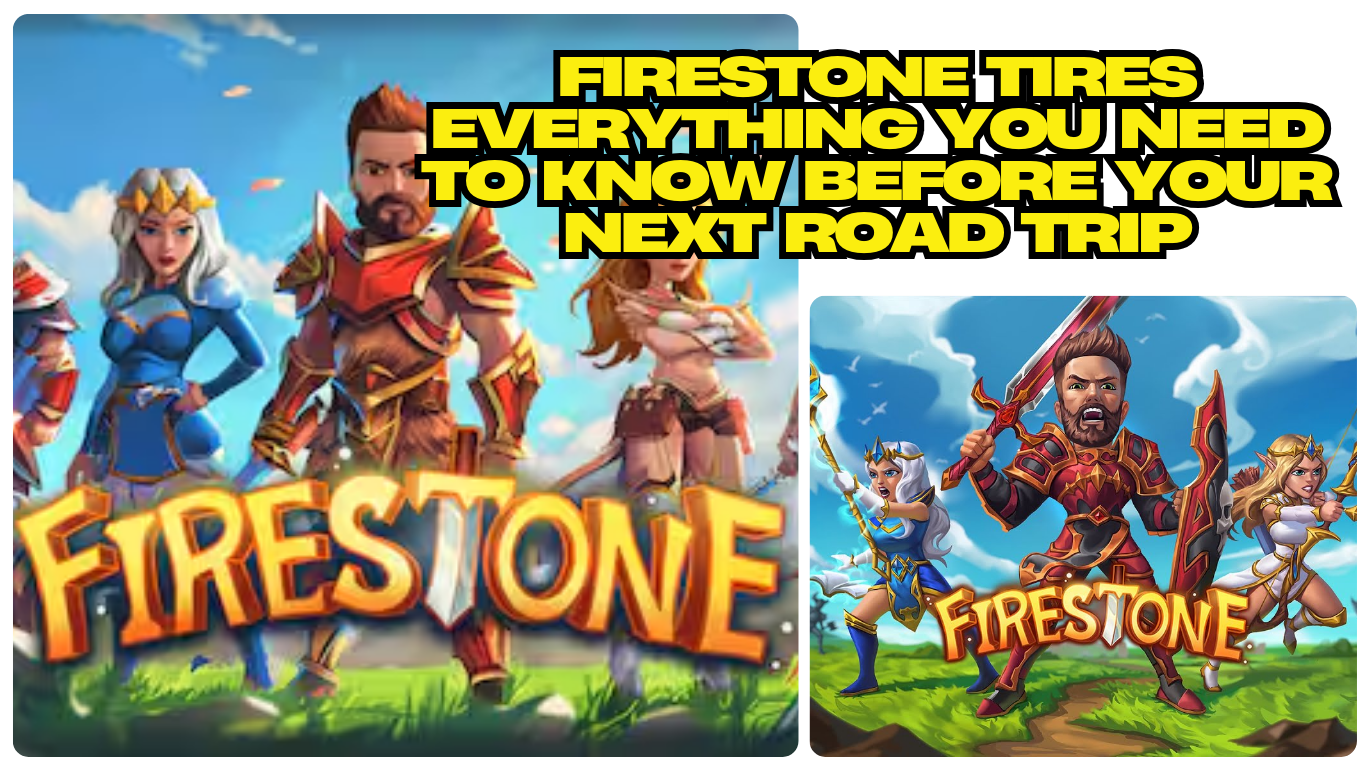If you’ve ever driven past a Firestone Complete Auto Care store or seen their ads during a football game, you might wonder: Are Firestone tires actually worth the hype? From family SUVs to rugged pickup trucks, Firestone has been a household name in the tire industry for over a century. But with so many brands out there, how do you know if Firestone is right for your ride? In this Firestone tire guide, we’ll break down their history, best-selling tires, warranty perks, and even how they stack up against competitors. Let’s roll in!
Firestone 101: A Quick History Lesson
Firestone isn’t just another tire company—it’s a piece of American automotive history. Founded in 1900 by Harvey Firestone in Akron, Ohio (aka the “Rubber Capital of the World”), the brand quickly became a pioneer. Here’s the scoop:
- Ford Partnership: Firestone supplied tires for Henry Ford’s Model T, helping cars go mainstream.
- Innovations: They invented the first pneumatic (air-filled) tractor tire and later created the radial tire, which improved durability and fuel efficiency.
- Bridgestone Era: In 1988, Firestone merged with Japan’s Bridgestone, creating a global tire giant.
Today, Firestone sells over 60 tire models and operates 1,700+ service centers across the U.S. Whether you’re commuting in a sedan or off-roading in a Jeep, there’s likely a Firestone tire with your name on it.
Firestone’s Best-Selling Tires: Which One Fits Your Ride?
Not all tires are created equal. Firestone offers options for every season, budget, and driving style. Here are their top-rated picks:
Firestone Destination LE3 (Best for SUVs & Crossovers)
- Why drivers love it: Smooth, quiet, and great in rain. Perfect for road trips.
- Bonus: 70,000-mile tread warranty.
- Ideal for: Honda CR-V, Toyota RAV4, Ford Explorer.
Firestone Firehawk Indy 500 (Best for Performance)
- Why drivers love it: Grips the road like glue. Think sporty handling for Mustangs or Camaros.
- Bonus: Asymmetric tread design for sharp cornering.
- Watch out: Not ideal for snowy climates.
Firestone WeatherGrip (Best All-Weather)
- Why drivers love it: Handles light snow and summer heat without swapping tires.
- Bonus: 3PMSF-rated (a fancy way of saying “snow-approved”).
- Ideal for: Midwest drivers who face unpredictable weather.
Firestone Transforce HT2 (Best for Trucks)
- Why drivers love it: Heavy-duty tread handles trailers, gravel, and mud.
- Bonus: Reinforced sidewalls resist punctures.
- Ideal for: Chevy Silverado, Ford F-150, Ram 1500.
Firestone vs Competitors: How Do They Stack Up?
Let’s be real—tires are a big investment. Here’s how Firestone compares to rivals like Goodyear and Michelin:
- Price: Firestone tires are generally cheaper than Michelin but slightly pricier than Cooper. Expect to pay 120–250 per tire.
- Durability: Firestone’s warranties (up to 70,000 miles) beat Goodyear’s average (60,000 miles) but lag behind Michelin’s 80,000-mile offers.
- Performance: Firestone shines in all-weather and touring categories. For pure luxury, Michelin still leads.
Pro Tip: Check Firestone’s seasonal promotions—they often include rebates or free alignments with purchase!
Firestone’s Warranty: What’s Covered (and What’s Not)
Firestone’s warranties are a major selling point. Here’s the breakdown:
- Tread Life Warranty: If your tires wear out before the mileage limit (e.g., 65,000 miles), Firestone will replace them pro-rated.
- Workmanship & Materials Warranty: Covers defects like tread separation for up to 5 years.
- Road Hazard Warranty: Pays for repairs if you hit a pothole or nail (requires extra fee at purchase).
Catch: Warranties only apply if you follow maintenance guidelines (rotations, alignments, etc.). Skip those, and you’re on your own.
Firestone Tire Maintenance: 5 Tips to Make Them Last
Even the best tires won’t survive bad habits. Keep your Firestones in top shape with these tips:
- Rotate Every 6,000 Miles: Front tires wear faster—swap them to the rear to even things out.
- Check Pressure Monthly: Underinflated tires waste gas and overheat. Use the sticker inside your driver’s door for the right PSI.
- Align Twice a Year: Potholes knock wheels out of alignment, causing uneven wear.
- Avoid Curb Scrapes: Hitting curbs shreds sidewalls. Parallel park carefully!
- Store Properly: If you swap winter/summer tires, keep spares in a cool, dry place (not your sun-baked garage).
Where to Buy Firestone Tires: Deals, Promos, and Pitfalls
You’ve got options:
- Firestone Stores: Pros: Expert installation, free fixes, and promotions. Cons: Prices can be higher than online.
- Amazon/Walmart: Pros: Cheaper. Cons: You’ll need to pay extra for mounting and balancing.
- Tire Rack: Pros: Huge selection. Cons: Shipping costs add up.
Money-Saving Hack: Buy during holiday weekends (Memorial Day, Black Friday) for instant rebates up to $100.
Common Complaints: What Drivers Really Think
No brand is perfect. Firestone’s most common gripes include:
- Limited High-Performance Options: Gearheads might prefer Michelin Pilot Sport tires.
- Inconsistent Wear: Some drivers report uneven tread life, but this is often tied to poor maintenance.
- Road Noise: Budget tires like the Firestone FR710 can get loud at highway speeds.
Final Verdict: Should You Choose Firestone?
If you want affordable, reliable tires with strong warranties and easy access to service centers, Firestone is a solid pick. They’re especially great for families, daily commuters, and truck owners. Just avoid their ultra-cheap models if you drive long distances daily.
For luxury cars or extreme winter conditions, brands like Michelin or Nokian might be better. But for most drivers? Firestone hits the sweet spot between cost and quality.
Where to Start: Visit Firestone’s website to find your tire size and local promotions.
Keywords for SEO: Firestone tires review, best Firestone tires, Firestone tire warranty, Firestone vs Michelin, Firestone Destination LE3, Firestone promotions, where to buy Firestone tires, tire maintenance tips, all-weather tires, Firestone Transforce HT2.
